The Washington State Legislature has defined October as Disability Awareness Month, and encourages schools to promote awareness and understanding of people with different abilities and their history.
Featured below are a number of famous people, each with a different set of abilities. As part of Disability Awareness Month, we are featuring these people to help increase respect and promote inclusion of those with different abilities.
Frida Kahlo, Artist
“Feet, what do I need you for when I have wings to fly?” is one famous quote attributed to Frida Kahlo. Her career as an artist proves that she surely did allow her talent to make her soar.
She was born in Mexico in 1907 and suffered from polio as a child, which damaged her right leg and foot. When she was 17, a traffic accident left her with severe injuries to her hips and spine, dependent on a wheelchair.
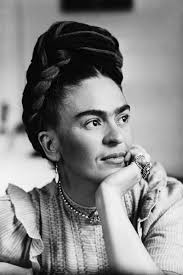
Following her accident, she began painting, mostly self-portraits. Many of her works mix realism and fantasy and explore themes such as identity, gender, class, and race.
Her work has been studied by art students around the world and she was the first Mexican artist to have work displayed in the Louvre. Some of her most well-known self-portraits show herself in her wheelchair. (from: https://www.disabilityfriendlylv.com/15-inspiring-famous-people-disabilities/)
Michael J. Fox: Actor and Writer
Fox was diagnosed with young-onset Parkinson’s disease in 1991 at 29. Upon disclosing his condition in 1998, he committed himself to the campaign for increased Parkinson’s research. In 2012, Fox announced his intention to return to full-time acting. In 2013, he returned to primetime network TV as Mike Henry on NBC’s “The Michael J. Fox Show.” The show, which quickly gained nationwide attention, centered on a beloved newscaster and family man returning to work following a diagnosis with Parkinson’s Disease. 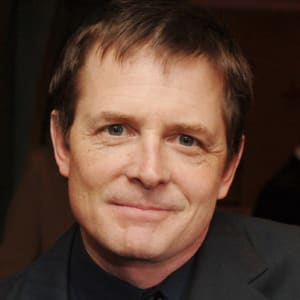
Fox is the recipient of several lifetime achievement awards for accomplishments in acting, including the 2011 Hoerzu Magazine Golden Camera Award and the 2010 National Association of Broadcasters Distinguished Service Award. Fox also is the bestselling author of four books. His most recent memoir, No Time Like the Future: An Optimist Considers Mortality, will be released on November 17, 2020. A Funny Thing Happened on the Way to the Future, a compendium of wisdom for graduates, was published in April 2010. Always Looking Up: The Adventures of an Incurable Optimist, published in April 2009, debuted at number two on the New York Times bestseller list. It was accompanied by an ABC-TV primetime special that was nominated for an Emmy for Outstanding Nonfiction Special; additionally, its audio recording by Fox won the 2010 Grammy award for Best Spoken Word Album, an honor for which all three books were nominated. His first book, the 2002 memoir Lucky Man, also was a New York Times and national bestseller. (from: https://www.michaeljfox.org/michaels-story)
John F. Nash, Jr.: Mathematician and Nobel Laureate
The oldest of two children, John F. Nash, Jr. was born June 13, 1928 in Bluefield, West Virginia to John and Margaret Nash, an electrical engineer and school teacher. By the time he was a student in high school he was reading the classic “Men of Mathematics” by E.T. Bell and succeeded in proving the classic Fermat theorem about an integer multiplied by itself p times where p is a prime. He also did electrical and chemistry experiments at that time. 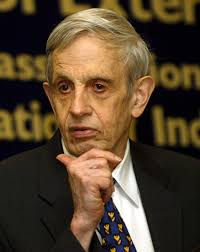
He attended Carnegie Mellon University as an undergraduate but changed majors enough times to earn a Masters of Science Degree and a Bachelor of Science by the time he graduated. As a graduate student at Princeton, he gained greater interest in game theory studies which had been stimulated by the work of von Neumann and Morgenstern. He was on the mathematics faculty at M.I.T. from 1951 through until he resigned in the spring of 1959. The mental disturbances originated in the early months of 1959 at a time when his wife happened to be pregnant. As a consequence, he resigned his position as a faculty member at M.I.T. and spent 50 days under hospital “observation”. Additional hospitalizations occurred over the years that extended to as long as eight months.
In 1994, Nash was awarded the Nobel Prize in Economics for pioneering analysis of equilibria in the theory of non-cooperative games. He introduced the distinction between cooperative games, in which binding agreements can be made, and non-cooperative games, where binding agreements are not feasible, and he developed an equilibrium concept for non-cooperative games that now is called Nash equilibrium. (from: https://www.nobelprize.org/prizes/economic-sciences/1994/nash/biographical/)
Albert Einstein: Theoretical Physicist and Nobel Laureate
Albert Einstein, the German/American theoretical physicist who famously developed the theory of relativity lived at the high-functioning end of the autism spectrum, and was thought to have had Asperger syndrome.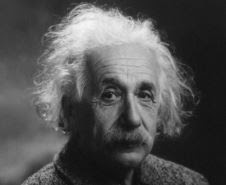
Born at Ulm, Kingdom of Wütternberg in Germany, on March 14th 1879, Einstein gained his diploma in physics and mathematics in 1901 in Zurich, Switzerland. Just four years later in 1905 he obtained his doctorate degree. During this time he worked as a technical assistant at the Swiss Patent Office and produced much of his remarkable work. After several professor positions in Zurich, Prague, and Berlin, Einstein published his paper on the general theory of relativity in 1916.
During this time he also contributed to the problems of the theory of radiation laying the foundation of the photon theory of light as well as improving the problems in statistical mechanics by developing the quantum theory of a monatomic gas; therefore making a connection with atomic transition probabilities. Einstein was awarded the Nobel Prize in Physics in 1921.
While in Berlin, Einstein became a German citizen which he then renounced in 1933 for political reasons and emigrated to America to take the position of Professor of Theoretical Physics at Princeton. He became a United States citizen in 1940 and retired from his post in 1945. After World War II, he collaborated with Dr. Chaim Weizmann in establishing the Hebrew University of Jerusalem.
Einstein didn’t speak the first three or four years of his life and incessantly repeated sentences, possible indicators for Asperger’s. His lack of social skills and preoccupation with complex subjects, math and science are also indicators. Einstein additionally had a lack of tact and social empathy which is commonly found in people with autism spectrum disorders. However, Asperger’s had yet to be properly diagnosed while Einstein was alive so there is no definitive answer as to whether or not the “absent-minded professor” lived with Asperger’s. (from: https://www.mcbdds.org/264/Albert-Einstein)
Andrea Boccelli: Singer and Songwriter
Andrea Bocelli is an Italian tenor, singer-songwriter, and multi-instrumentalist. Born with poor eyesight, he became blind at the age of twelve following a soccer accident.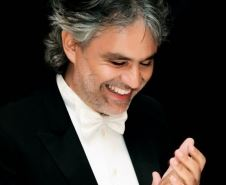
Born on September 22, 1958 in Lajatico, Italy, Bocelli was diagnosed with congenital glaucoma, and visually impaired. Turning to music for comfort, he showed a passion for it early in life. At the age of six, he started piano lessons and later learned to play the flute, saxophone, trumpet, trombone, guitar and drums.
In 1970, at the age of twelve, he lost his eyesight completely after he was accidentally hit on the head during a soccer match and suffered a brain hemorrhage. Doctors resorted to leeches in an attempt to save his sight, but it was unsuccessful, and he remained blind. Two years later at the age of fourteen, Bocelli won his first song competition with “O sole mio.”
Bocelli later studied law at the University of Pisa. He spent a year working as a lawyer, before deciding to try a singing career, financing himself by playing piano in bars. His lucky break, however, didn’t come until 1992 when he was in his thirties. Bocelli recorded a demo tape of a duet that was heard by famed Italian tenor Luciano Pavarotti, who was then persuaded to record the song with him. The duo scored a Europe-wide smash hit while international success followed with the single “Time To Say Goodbye” in 1996, recorded with Sarah Brightman.
Notable albums include Romanza (1997), Sueno (1999), Tosca (2003), Cieli di Toscana (2001), Amore (2006), and Incanto (2008). Outside of music, Bocelli is the author and coauthor of numerous works available in Italian, English, and other languages. Some books are also available in Braille. He has sold over 80 million albums worldwide, making him the biggest selling singer in the history of Classical music. His duet with Celine Dion “The Prayer” for the film The Quest for Camelot won the Golden Globe for Best Original Song and was nominated for an Academy Award in 1999. Speaking of his hard work to get where he is today, Bocelli has said, “Destiny has a lot to do with it, but so do you. You have to persevere, you have to insist.”
(from: https://www.mcbdds.org/267/Andrea-Bocelli)
Halle Berry: Actress, Model, and Advocate
Berry’s career began as a model. In 1985 she won first runner up in Miss USA and became the first African American Miss World entrant. Four years later, Berry was diagnosed with Type One Diabetes, meaning that her body does not produce insulin. “I fell ill – dramatically – when I was on the TV show, Living Dolls, in 1989. I felt I needed energy but I didn’t even have a minute to pop out and get a chocolate bar,” she said. “I didn’t really know what was wrong.”
She was diagnosed after spending seven days in a diabetic coma and woke up in the hospital. In 1991, Berry scored her first major movie role. She was cast as Samuel L. Jackson’s drug-addicted girlfriend in Spike Lee’s critically acclaimed film, Jungle Fever. In the years following this, she appeared in, Losing Isaiah (1995), Why Do Fools Fall In Love (1999), X –Men (2000), and Monsters Ball (2001) to name a few.
In 2002, Berry was awarded an Oscar for her lead role in Monsters Ball. She is the only African American actress to have received the award. Halle Berry is an advocate for disability rights and ending domestic violence. (from: https://www.respectability.org/2018/02/halle-berry-living-disability-taking-stand-domestic-violence/)
Daniel Radcliff: Actor
Radcliffe suffers from what is called dyspraxia, a developmental coordination disorder that makes things as simple as tying his shoes or even writing a struggle. He only has a mild case, but still struggles nonetheless, especially in school. Some cases are so severe that some people struggle with walking up stairs or even driving a car.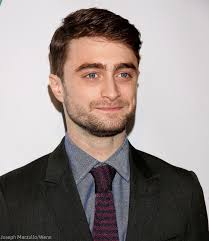
Radcliffe doesn’t let his disorder get in his way though. He knew he struggled with certain things in life, school being one of them, and from a very young age he decided he wanted to be an actor. He wasn’t going to let anything stop him from achieving what he wanted. At the age of nine, Radcliffe made his first big break as an actor by playing David Copperfield in a British Broadcasting Corporation (BBC) show. From there, his career took off. Before starring in the Harry Potter films, he played in one more major role in the film The Tailor of Panama in 2001. (from: https://ilslearningcorner.com/2015-01-celebrity-feature-daniel-radcliffe/)
Marlee Matlin: Actress, Writer, and Advocate
Marlee Beth Matlin is an American actress. She is the youngest, and only deaf performer to win the Academy Award for Best Actress, which she won for Children of a Lesser God in 1986.
Matlin was born on August 24, 1965 in Morton Grove Illinois. At 18 months, she lost all her hearing in her right ear and 80 percent of the hearing in her left ear, making her legally deaf. Later, she wrote in her autobiography that it may have been due to a genetically malformed cochlea. Instead of being sent to a special school, Matlin’s parents decided to educate her in their community, and she began to learn sign language at the age of five.
As a child, Matlin discovered acting through a program at the Center on Deafness that brought deaf and hearing kids together. She landed her first leading role as Dorothy in a production of The Wizard of Oz in Chicago. Matlin continued to pursue her acting into adulthood, while also earning a degree in law enforcement at Harper College.
After graduating college, Matlin worked in the Chicago theater scene for several years before getting her big break as the lead in a production of Children of a Lesser God. When the play was adapted into a movie, she reprised her role, starring as Sarah, a young deaf woman who chooses to communicate through sign language alone. At 20 years of age, starring in her first film role, Matlin became a household name when she won the Academy Award for her portrayal in 1986.
Moving to television, Matlin was the star of the series Reasonable Doubts, playing an assistant district attorney alongside Mark Harmon. In 1993, she showed her comedic abilities with a guest appearance as Jerry Seinfeld’s lip-reading romantic interest on Seinfeld. That same year, she landed a recurring role on Picket Fences. She received Emmy Award nominations for her work on both series. She received further Emmy nominations for her roles on The Practice in 2000, and Law & Order: Special Victims Unit in 2004.
Branching out into a new direction, Matlin proceeded to write three books for young adults, Deaf Child Crossing, Nobody’s Perfect, and Leading Ladies. Returning to television in 2008, Matlin showed off another side of herself, joining the cast of season six Dancing with the Stars. In 2009, she published her autobiography, I’ll Scream Later, and lent her voice to the animated television show The Family Guy. Outside of work, she serves on the board of Very Special Arts and Starlight Children’s Foundation. She also is an honorary board member for Easter Seals. (from: https://www.mcbdds.org/307/Marlee-Matlin)
Temple Grandin: Author, Professor, and Animal Sciences Consultant
Grandin was born Mary Temple Grandin in Boston Massachusetts in 1947 to a well-to-do family. She was labeled as having “brain damage” due to her different mental development and special needs. Her mother worked very hard to create a safe and encouraging space for her daughter, working with teachers and special needs experts. Grandin’s mother concluded that her daughter was autistic, though Grandin was not formally diagnosed until well into adulthood.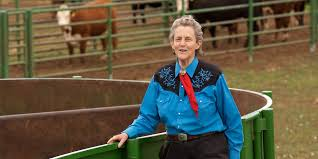
When Grandin was in high school, she spent time at an aunt’s cattle ranch and forged what would be a lifelong connection with bovines. The experience inspired her to create the “hug box”, also referred to as a squeeze box, that has become instrumental in helping people with autism as a stress-relieving device. She was inspired by how cattle were calmed down in a squeeze chute using pressure.
Grandin has earned multiple degrees, written several books, given hundreds of speeches in her career, and has shared priceless insight into the way the autistic mind works. Grandin outlined the three different types of autistic ways of thinking, helping millions of people with her research and never-ending work. (from: https://ourcommunitynow.com/news-local/dr-temple-grandin-of-csu-named-one-of-the-top-college-professors-in-the-country)
Helen Keller: Author and Activist
Helen Adams Keller was born a healthy child in Tuscumbia, Alabama, on June 27, 1880. Her parents were Kate Adams Keller and Colonel Arthur Keller. At the age of 19 months, Helen became deaf and blind as a result of an unknown illness, perhaps rubella or scarlet fever. As Helen grew from infancy into childhood, she became wild and unruly. 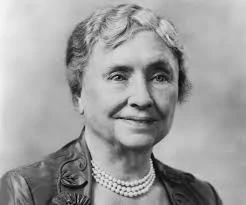
In 1890, when she was just 10, she expressed a desire to learn to speak; Anne took Helen to see Sarah Fuller at the Horace Mann School for the Deaf and Hard of Hearing in Boston. Fuller gave Helen 11 lessons, after which Anne taught Helen. Throughout her life, however, Helen remained dissatisfied with her spoken voice, which was hard to understand.
Helen’s extraordinary abilities and her teacher’s unique skills were noticed by Alexander Graham Bell and Mark Twain, two giants of American culture. Twain declared, “The two most interesting characters of the 19th century are Napoleon and Helen Keller.”
From a very young age, Helen was determined to go to college. In 1898, she entered the Cambridge School for Young Ladies to prepare for Radcliffe College. She entered Radcliffe in the fall of 1900 and received a Bachelor of Arts degree cum laude in 1904, the first deafblind person to do so. While still a student at Radcliffe, Helen began a writing career that was to continue throughout her life. In 1903, her autobiography, The Story of My Life, was published.
Helen wrote over 475 speeches and essays on topics such as faith, blindness prevention, birth control, the rise of fascism in Europe, and atomic energy. Helen used a braille typewriter to prepare her manuscripts and then copied them on a regular typewriter.
Helen was famous from the age of 8 until her death in 1968. Her wide range of political, cultural, and intellectual interests and activities ensured that she knew people in all spheres of life. She counted leading personalities of the late nineteenth and early twentieth centuries among her friends and acquaintances. These included Eleanor Roosevelt, Will Rogers, Albert Einstein, Emma Goldman, Eugene Debs, Charlie Chaplin, John F. Kennedy, Andrew Carnegie, Henry Ford, Franklin D. Roosevelt, Dwight D. Eisenhower, Katharine Cornell, and Jo Davidson to name but a few. (from: https://www.afb.org/about-afb/history/helen-keller/biography-and-chronology/biography)
Stephen Hawkings: Scientist
At the age of 21, Stephen Hawking was diagnosed with ALS, otherwise known as Lou Gehrig’s disease. He was told he wouldn’t live to see 25. Fast forward over 50 years. Hawking is still alive, battling his debilitating disease and refusing to let it interfere with his career. For 30 years he was a full professor of mathematics at Cambridge University. He directed the school’s Center for Theoretical Cosmology and has received dozens of honorary degrees.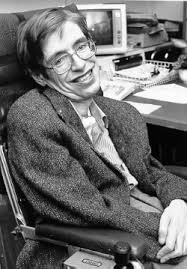
He’s best known, however, for his popular books on science, such as A Brief History of Time. He’s also well known for his pioneering work in black holes and relativity.
How did he manage to achieve all this? He admits that before his diagnosis, he wasn’t very focused. When he realized he might not survive to earn his Ph.D., he devoted himself to his work.
He was in a wheelchair from 1969 until his death in 2018, adapting to the progressing of his disease with devices that enable him to speak or dictate. He used a single cheek muscle attached to a speech generating device and continued to lecture, teach and research. He died on 14 March 2018 at the age of 76, after living with motor neurone disease for more than 50 years. (from: https://www.disabilityfriendlylv.com/15-inspiring-famous-people-disabilities/)
Stevie Wonder: Singer, Songwriter, and Advocate
Wonder was born Stevland Hardaway Judkins on May 13, 1950, in Saginaw, Michigan. He was born six weeks early with retinopathy of prematurity, an eye disorder which was exacerbated when he received too much oxygen in an incubator, leading to blindness. Wonder showed an early gift for music, first with a church choir in Detroit, Michigan, where he and his family had moved to when he was four years old, and later with a range of instruments, including the harmonica, piano and drums, all of which he taught himself before age 10. 
He was just 11 years old when he was discovered by Ronnie White of the Motown band The Miracles. An audition followed with Motown founder Berry Gordy, Jr., who didn’t hesitate to sign the young musician to a record deal. In 1962, he also released two albums. One was Tribute to Uncle Ray, where Wonder covered the songs of soul icon Ray Charles. Wonder then developed a major audience with Little Stevie Wonder the 12 Year Old Genius, an album recorded live. The set’s edited single “Fingertips, Pt. 2” became Wonder’s first No. 1 song, reaching the top of both the R&B and pop charts. He continued to record and perform a series of number 1 songs throughout the decades. Wonder occasionally surfaced with new music as he progressed through his advancing years, recording the Golden Globe-nominated single “Faith” with Ariana Grande in 2016, as well as the song “Future Sunny Days,” specifically written for the 2018 finale of the hit series Scandal.
In addition to his acclaimed artistry, Wonder has routinely tackled social issues through his music and appearances. He successfully spearheaded a movement to create a national holiday recognizing the birthday of Dr. Martin Luther King, Jr., a celebration he sang about in the track “Happy Birthday” from Hotter Than July. Wonder had dedicated his Oscar win to anti-apartheid activist/future president Nelson Mandela and had performed on the No. 1 charity singles “We Are the World,” to raise money for famine relief in Africa, and “That’s What Friends Are For,” with Warwick, Ellton John and Gladys Knight, benefiting the American Foundation for AIDS Research (amfAR). (from: https://www.biography.com/musician/stevie-wonder)
Harriet Tubman: Abolitionist and Suffragist
Tubman’s exact birth date is unknown, but estimates place it between 1820 and 1822 in Dorchester County, Maryland. Born Araminta Ross, the daughter of Harriet Green and Benjamin Ross, Tubman had eight siblings. By age five, Tubman’s owners rented her out to neighbors as a domestic servant. Early signs of her resistance to slavery and its abuses came at age twelve when she intervened to keep her master from beating an enslaved man who tried to escape. She was hit in the head with a two-pound weight, leaving her with a lifetime of severe headaches and narcolepsy. Although slaves were not legally allowed to marry, Tubman entered a marital union with John Tubman, a free black man, in 1844. She took his name and dubbed herself Harriet.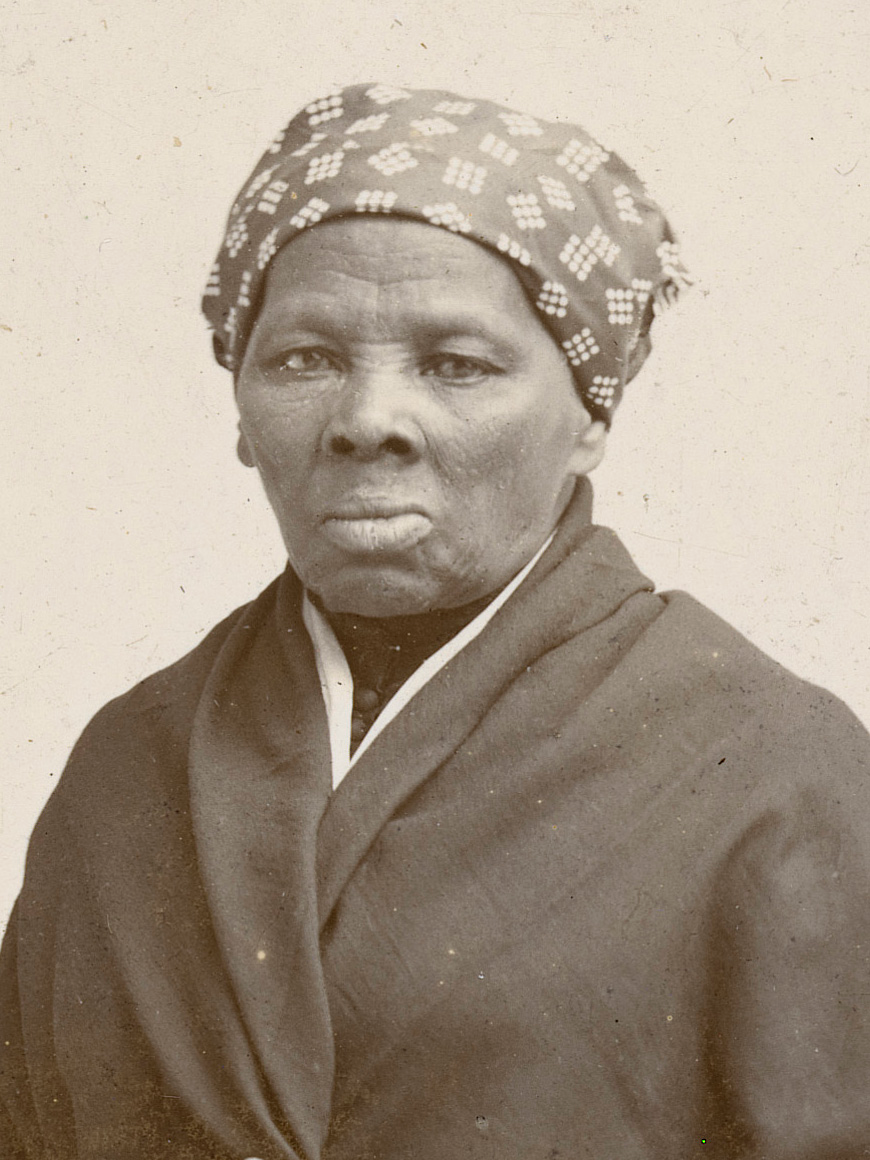
Contrary to legend, Tubman did not create the Underground Railroad; it was established in the late eighteenth century by black and white abolitionists. Tubman likely benefited from this network of escape routes and safe houses in 1849, when she and two brothers escaped north. Her husband refused to join her, and by 1851 he had married a free black woman. Tubman returned to the South several times and helped dozens of people escape. Her success led slaveowners to post a $40,000 reward for her capture or death.
Tubman was never caught and never lost a “passenger.” She participated in other antislavery efforts, including supporting John Brown in his failed 1859 raid on the Harpers Ferry, Virginia arsenal. As a Union spy and scout, Tubman often transformed herself into an aging woman. She would wander the streets under Confederate control and learn from the enslaved population about Confederate troop placements and supply lines. Tubman helped many of these individuals find food, shelter, and even jobs in the North. As a nurse, Tubman dispensed herbal remedies to black and white soldiers dying from infection and disease.
After the war, Tubman raised funds to aid freedmen, joined Elizabeth Cady Stanton and Susan B. Anthony in their quest for women’s suffrage, cared for her aging parents, and worked with white writer Sarah Bradford on her autobiography as a potential source of income. She married a Union soldier Nelson Davis, also born into slavery, who was more than twenty years her junior. Residing in Auburn, New York, she cared for the elderly in her home and in 1874, the Davises adopted a daughter. After an extensive campaign for a military pension, she was finally awarded $8 per month in 1895 as Davis’s widow (he died in 1888) and $20 in 1899 for her service. In 1896, she established the Harriet Tubman Home for the Aged on land near her home. Tubman died in 1913 and was buried with military honors at Fort Hill Cemetery in Auburn, New York.(from: https://www.womenshistory.org/education-resources/biographies/harriet-tubman)
Maysoon Zayid: Comedian, Writer, and Advocate
 Maysoon Zayid is an actress, comedian, writer, and disability advocate. She is a graduate of and a Guest Comedian in Residence at Arizona State University. Maysoon is the co-founder/co-executive producer of the New York Arab American Comedy Festival and The Muslim Funny Fest. She was a full-time On Air Contributor to Countdown with Keith Olbermann and a columnist for The Daily Beast. She has most recently appeared on Oprah Winfrey Networks In Deep Shift, 60 Minutes, and ABC News. Maysoon had the number one TED Talk of 2014 and was named 1 of 100 Women of 2015 by BBC.
Maysoon Zayid is an actress, comedian, writer, and disability advocate. She is a graduate of and a Guest Comedian in Residence at Arizona State University. Maysoon is the co-founder/co-executive producer of the New York Arab American Comedy Festival and The Muslim Funny Fest. She was a full-time On Air Contributor to Countdown with Keith Olbermann and a columnist for The Daily Beast. She has most recently appeared on Oprah Winfrey Networks In Deep Shift, 60 Minutes, and ABC News. Maysoon had the number one TED Talk of 2014 and was named 1 of 100 Women of 2015 by BBC.
As a professional comedian, Maysoon has performed in top New York clubs and has toured extensively at home and abroad. She was a headliner on the Arabs Gone Wild Comedy Tour and The Muslims Are Coming Tour. Maysoon appeared alongside Adam Sandler in You Don’t Mess with the Zohan and has written for VICE. She limped in New York Fashion Week and is a recurring character on General Hospital. (from: www.Maysoon.com)
Senator Tammy Duckworth: War Veteran, Advocate & Legislator
In 2004, Duckworth was deployed to Iraq as a Blackhawk helicopter pilot for the Illinois Army National Guard. On November 12, 2004, her helicopter was hit by an RPG and she lost her legs and partial use of her right arm. Senator Duckworth spent the next year recovering at Walter Reed Army Medical Center, where she quickly became an advocate for her fellow Soldiers. After she recovered, she became Director of the Illinois Department of Veterans’ Affairs. In 2009, President Obama appointed Duckworth as an Assistant Secretary of Veterans Affairs. In the U.S. House, Duckworth served on the Armed Services Committee. In the U.S. Senate, Duckworth co-founded the Senate’s first-ever Environmental Justice Caucus and serves on the Armed Services Committee; the Environment & Public Works Committee; the Commerce, Science, & Transportation Committee; and the Small Business & Entrepreneurship Committee.
In 2018, after Duckworth became the first Senator to give birth while serving in office, and secured a historic rules change that allows Senators to bring their infant children onto the Senate floor. Duckworth is fluent in Thai and Indonesian. She attended college at the University of Hawaii and earned a Master of Arts in International Affairs from the George Washington University. Following graduation, Duckworth moved to Illinois and began pursuing a Ph.D. in Political Science at Northern Illinois University and later worked for Rotary International. Senator Duckworth volunteers at local food pantries and participates in community service projects in her free time. (from: https://www.duckworth.senate.gov/)


